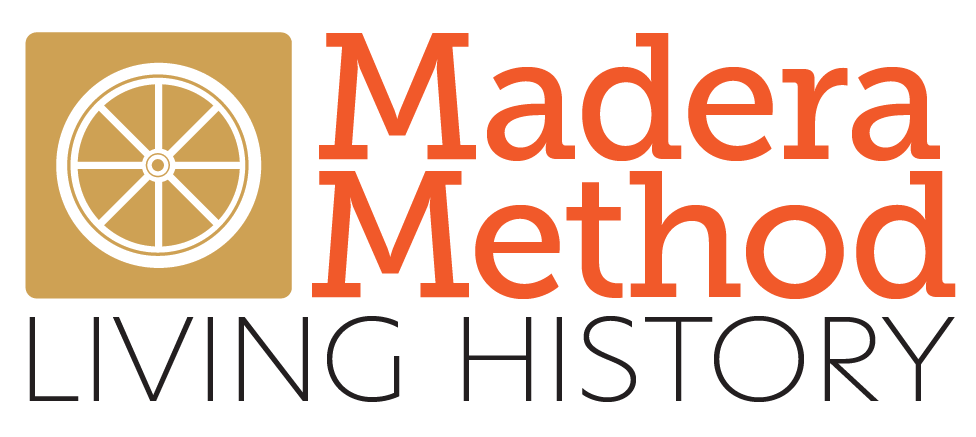“Living black and white,” or should we say, “Black on white?” Either way, there has been a lot of talk recently about something that was once considered quite acceptable — Blackface minstrels.
Some research suggests that the idea began in earnest around 1900 as comedic performances of “blackness” by whites in exaggerated costumes and make-up. It is claimed that the features and culture of African Americans — including their looks, language, dance, deportment, and character, were brought to the stage and movies to entertain whole communities.
I am not sure about all that, but I do know that once upon a time, “blackface” was quite acceptable, even in Madera, but it didn’t begin here as Whites painting their faces black and performing “Negro” minstrels. They began as troupes of Blacks coming to Madera to perform. Consider the following.
In a 1915 issue of the Madera Tribune, readers were informed that “The Virginia Minstrels, real colored ones, will arrive in Madera August 6 to give one of the biggest shows of its kind ever seen in Madera.”
Year after year in the first half of the 20th century, colored minstrels — not blackface Whites — entertained Maderans, and The Tribune explained it this way.
“The modern minstrel evolved from the colored race. The Negro, if he can be restrained from becoming self-conscious, makes the best minstrel man. Any person (White?) is sure of a good laugh if they can but be around a group of Negroes for 30 minutes without the latter knowing they are near because then the colored man is perfectly natural.
“There have been many colored minstrel shows which were not satisfactory because the colored performers were self-conscious and did not act natural,” wrote The Tribune reporter.
“The famous Georgia Minstrels have always… known just how to get the performers to exhibit that peculiar humor so well known among the southern darkies.”
It probably doesn’t take much imagination to figure out what constituted “peculiar humor” in the case of the colored minstrels. One suspects it included the antics of Jim Crow or Stepin Fetchit.
By 1925, however, Madera’s minstrel shows had changed. Whites in blackface took over from the African-Americans and soon almost every organization in town was giving the community the “peculiar humor” that brought the crowds.
On Dec. 1, 1926, the National theater held a minstrel amateur night. Whites in blackface performed a “blackface novelty entitled ‘How High is Up?’ interspersed with song and dance.
By the 1930s the churches were getting into the act. In 1934, Madera’s Presbyterian Church put on a “real old-fashioned minstrel show under the direction of Madera High School Principal L. C. Thompson. The performance drew a “record-breaking attendance.”
Not to be left out, Madera’s Methodist Church put on a “Dixie Jamboree” blackface minstrel comedy. The choir performed such numbers as “Shortenin Bread” and “Old Man River”.
By 1950, the local services clubs took advantage of the popularity of minstrel shows, and the Lions Club led the pack with its “blackface jamborees.” On Sept. 28, 1950, the club announced the following.
“The purpose of any service club is two-fold: First to serve the community and secondly to create harmony.” Thus it was that the Madera Lions announced that they were going to present the “Blackface Jamboree of 1950.”
So successful were the Lions Club Jamborees that they became annual events. In 1951, Madera Lions Club members donned wigs, black makeup, and colorful costumes and for an hour and a half and “brought back to Maderans nostalgic memories of a bygone form of entertainment.” The show was performed in the Madera High School gymnasium. Blackface comedians included Lee Willingham as “Mr. Shiftless,” Everett Coffee as “Mr. Smiles,” and Ray Cobb as “Stepin Fetchit.”
In May 1959, Madera Union High School Superintendent L.C. Thompson was feted by the district’s employees with a retirement party, which included recognition of Thompson’s many performances in blackface minstrel productions.
It is not entirely clear when the last blackface program was performed in Madera, but it is safe to say they won’t experience a rebirth here.
It doesn’t take Black History Month to remind us that blackface isn’t just about painting one’s skin darker or putting on a costume. It invokes a racist and painful history. The performances may have been funny to white audiences, but to the black community, they must have been demeaning and hurtful.
Originally published in the Madera Tribune.




